It’s a strange, almost indecent sight to see a Boeing 747 or Airbus A380 being broken up. It marks a painful realisation that the aircraft that once heralded a new age of travel now lie in pieces, monuments to a world that no longer exists. They were built for a time when air travel wasn’t just about getting from one point to another, when the world’s cities were connected not by mere airliners, but by flying cathedrals, modern feats of engineering. They were monuments to ambition, to the belief that flight should be magnificent, not merely profitable. Eventually the last Boeing 747 slipped off the Everette line, the Airbus A380’s production wound down, and the world shrugged. A new A350 took off and a 787 landed, flying buses built to squeeze every last penny out of 250-300 economy passengers sardined across 9-abreast rows, shuffling to toilets built for contortionists. As airlines quietly mothballed their double-decked leviathans, an era ends. There were neither flags at half-mast, nor global mourning. The loss of these titans is more than an industrial footnote, this is cultural amputation.
The 747 wasn’t born in a boardroom, the Queen of the Skies was forged in the white heat of the Cold War. A gamble so immense Boeing nearly bankrupted itself for it. Yet it rewrote the map of the skies. A symbol of America’s Pax Aeronautica, it democratised long-haul travel and shrank the world, inviting ordinary families onto flights once reserved for diplomats and oligarchs. It gave a generation its first taste of New York, London, Tokyo, or Paris, and did so with unapologetic grandeur. Spiral staircases, lounges in the sky, and cockpits so vast that entire careers were made navigating their controls. Decades later, Europe mounted its reply with the A380, an aircraft not merely designed to compete but to proclaim Europe’s architectural defiance rendered in titanium and composite. A proof of concept that Europe could defy US aerospace hegemony, a symbol of European industrial will. Quiet as a whisper, smooth as silk, with room for bars, showers, even a piano if an airline had the guts.
The shear mass of these leviathans possessed such enormous inertia that small sharp gusts and moderate turbulence which might jostle a 737 or A320 barely even registered on them. Added to the experience of a wider, higher cabin, pressurised to a lower effective altitude than earlier widebodies, about 6,000 feet equivalent rather than 8,000 feet on older jets, reduces passenger fatigue and gives a sense of calm. The smooth airflow design, better noise insulation, and overall space contributes to increased passenger comfort too.
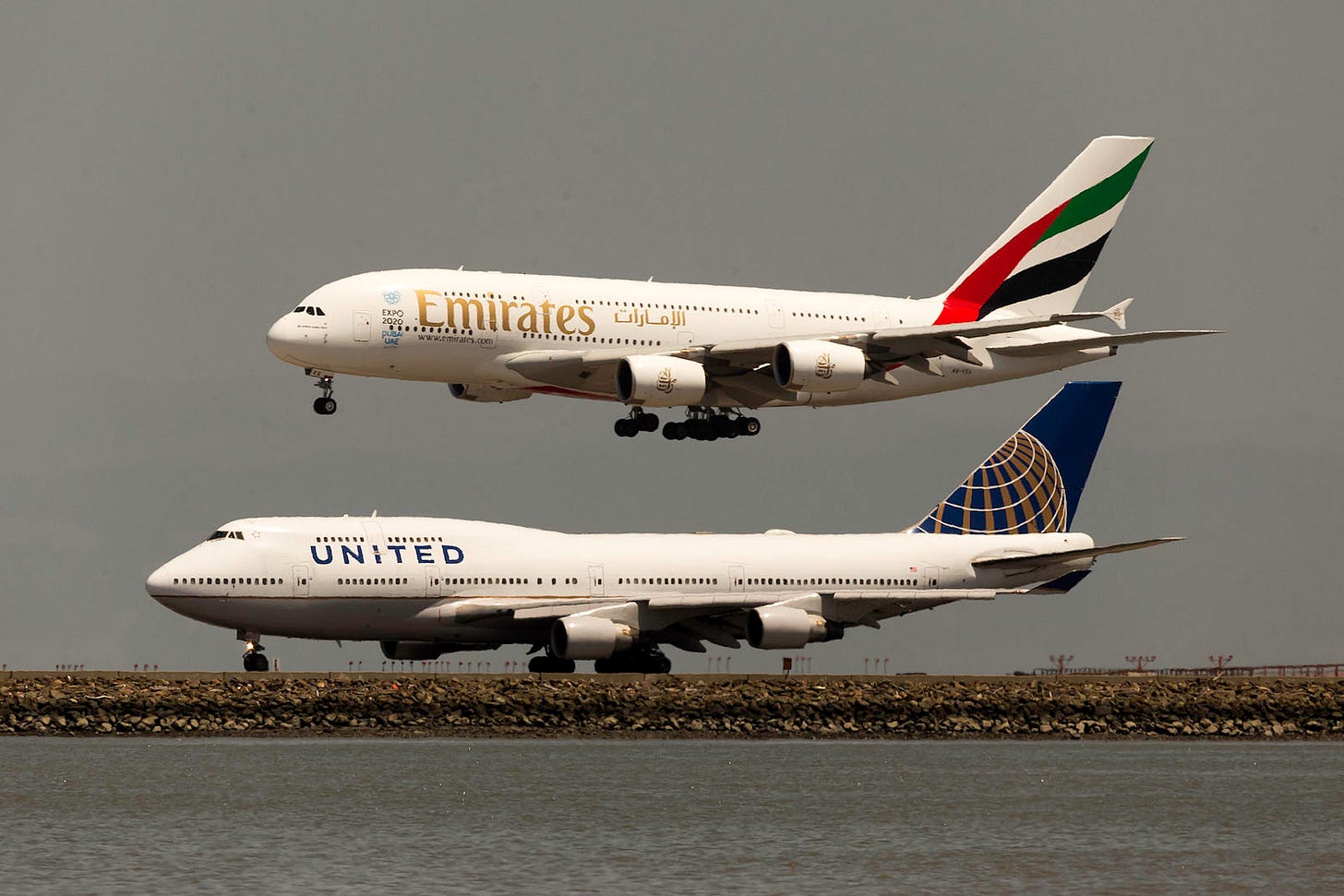
Big aircraft like the 747 and A380 weren’t just physically larger, they were metaphors for the kind of travel we aspired to. They were slow, steady, and dignified, compared to a modern narrowbody, where we endure the journey and escape the cabin. They were temples to the idea that air travel should be an experience, not a transaction. It was luxury not for the few, but for the ambitious middle classes, for honeymooners and dreamers, for a society that once believed bigger could be better, and that wonder should be shared.
Death By Spreadsheet
As the decades passed, in the cold arithmetic of post-deregulation aviation, four engines became two. Airports multiplied while hub models waned. Routes fragmented as airlines, with accountants now at the helm, preferred economics over romance. Airlines abandoned the old hub-and-spoke model, trading grand central airports for point-to-point convenience. They found it easier to fill 787s and A350s more efficiently than jumbos designed for a different century. Fuel savings became gospel, and maintenance costs turned sacred. With engine reliability surging under the regime of ETOPS (Extended-range Twin-engine Operational Performance Standards), safety regulations that were once the preserve of quadjets on a long overwater route now allowing twinjets to cross oceans and ice caps with impunity, the need for four engines on a wing quietly disappeared. By rendering a lot of the 747 and A380’s unique selling points (multiple engines for safety redundancy) redundant, ETOPS enabled the twinjet revolution. Without it, the 787 and A350 wouldn’t have been practical on long overwater or transpolar routes.
Airlines that were once merchants of ambition, became merchants of capacity. Rows multiplied as seat pitch shrank. In-flight meals devolved into shrink-wrapped penance. Where once passengers mingled in lounges or gathered at spiral staircases, now they jostled for elbow room and queued for restrooms designed for children. Ask the airline CFOs and they’ll rattle off the numbers: too many engines, too much fuel burn, too much risk. They’d insist point-to-point travel is the future, and that the world no longer needs four-engine monsters. But what they won’t say is the quiet part: they didn’t want to pay for them. The same airlines that once sold luxury now hawk windowless middle seats for £800, with a bag of pretzels if you’re lucky. Efficiency became the convenient excuse, but the real killer was timidity. An industry afraid to risk big again, content to squeeze existing designs for every last nautical mile, rather than dare build something worthy of wonder.
All this made sense on paper, but in reality it was a betrayal. In the relentless pursuit of lower costs and higher yields the narrowbody revolution had arrived and in its wake a new doctrine emerged, one that promised efficiency at the cost of everything else. Aircraft like the A321XLR were heralded as miracles of modern aviation, capable of flying London to Miami or Delhi to Tokyo on a single tank of fuel. Airlines salivated at the prospect of having no need for expensive widebody fleets or congested mega-hubs. Just buy a hundred single-aisle jets, scatter them across secondary airports, and siphon passengers into ever-smaller metal tubes.

COVID-19 made for the perfect excuse to strike the final blow. These great aircraft were quietly shuffled into storage, their wings stripped of logos and their interiors gutted, while CFOs issued press releases about ‘streamlining fleets’ and ‘right-sizing for future demand.’ But in truth, the industry had lost its courage and had aimed their rifles long before the virus came. The decline of these titans isn’t just a footnote in aviation journals, it’s a loss for civilisation itself. We replaced vast, elegant lounges with elbow wars over armrests. We traded national pride for frequent flyer points. Flying was once a human triumph. Now it’s public transport with turbulence. The jumbo jets took with them a sense of collective wonder.
False Prophets of the Revolution
Airlines assumed post-pandemic travel would recover sluggishly. Business travel would dwindle and leisure would be cautious. But it didn’t, and their short-sightednesss laid bare when demand returned faster, fiercer, and fuller than anyone had forecast. By 2023-2024, airports were packed and routes sold out. Twinjets that were hailed as the future couldn’t carry enough souls. Production delays meant airlines couldn’t acquire new A350s or 787s fast enough. Airport slots, finite as ever, couldn’t multiply. And suddenly the giants, rusting in the desert, mattered again. What the world forgot was simple: more seats mean cheaper seats. An A380 at 85% capacity is cheaper per seat than two 787-9s doing the same job. Emirates, which had never surrendered its belief in the A380, basked in vindication. British Airways, Singapore Airlines, Lufthansa, and Etihad sheepishly pulled their double-deckers from the bone yards. Not for nostalgia, but necessity. Even the 747, now reduced to a freighter fleet, found new life hauling Amazon parcels and luxury handbags while holidaymakers flew in sardine cans.
Post-pandemic, hub airports are filling up again. Dubai, Singapore, Qatar are all operating their A380 fleets full tilt on premium-heavy routes. The demand for capacity on trunk routes is rebounding. The problem is manufacturers have been too reluctant to think big. The irony was that the aircraft once declared obsolete were again essential, not because the spreadsheets changed, but because human beings defy prediction. And it became clear that the industry’s abandonment of giants wasn’t the result of cold numbers alone, it was timidity disguised as prudence. The fear of being seen as reckless, of daring to bet on something magnificent in an era obsessed with risk aversion.
We will need giants again
In the looming shadow of climate crisis and growing cities, it turns out that fewer flights carrying more people is not a luxury but a necessity. Mega-airports like Istanbul and Dubai are only the beginning. While Boeing has completely abandoned any plans for future large passenger jet space, cancelling early concepts for a twin-deck twinjet, part of the quietly mothballed Yellowstone Project Y3, once nicknamed the Boeing Ecoliner, it appears now they are focusing instead on the newer 777X. Meanwhile, the Airbus A380neo remains the ghost in the hangar. Should Rolls-Royce’s UltraFan programme deliver its promise of double-digit fuel efficiency gains, composite blades, and gearbox precision, the A380’s Achilles’ heel not only looks treatable, it may even beome profitable in a twin-dominated world. Emirates would jump first, as they always do making no secret of its hunger for a replacement.
Further east, when once Russia had to concede with mere marketing models of its ambitious Sukhoi KR-860, whispers remain of the Il-96-550, a speculative stretch of a Cold War relic, perhaps another Russian attempt to reclaim jumbo sovereignty. Meanwhile, as China locks her eyes on regional dominance, they may choose to stetch the CR929 into a twin-deck behemoth as the project inches forward by mid-century. Stranger things have happened. Afterall, Soviet Union once built the An-225.

The future jumbo jet may not even loook like a conventional tube with wings. In 2003, a concept photo of a blended wing body commercial aircraft emerged depicting the future of airliners was involved in an online hoax claiiming it as a render of a future Boeing 1000-seater aircraft, which the aircraft manufacturer refuted. However with a focus on hydrogen propulsion for the future and the complexities of hydrogen storage may compell aircraft to take interesting shapes to accomodate the bulbous pressurised storage tanks of liquid hydrogen. Companies like Airbus, Boeing and even startups like Nautilus and JetZero are already flying subscale prototypes with lifting bodies and blended wing forms to explore the viability of the concept, which may be scaled up to fill our airports in the future.
Conclusion
The 747 and A380 proved something important, that humanity can build wonders. Things that don’t make sense on a spreadsheet but make the world better, grander, more human. Now, we have traded it all for efficiency. We may have achieved a bit less fuel burn but also now have a lot less soul. There’s a reason nobody writes poems about the 737 MAX. The 747 and A380 represented something rare, an ambition unshackled from immediate practicality. Civilisation at its best dares to build the improbable, to reach for marvel, not merely efficiency. Their passing marks more than the decline of four engines on a wing, it marks a collective decision to live smaller.
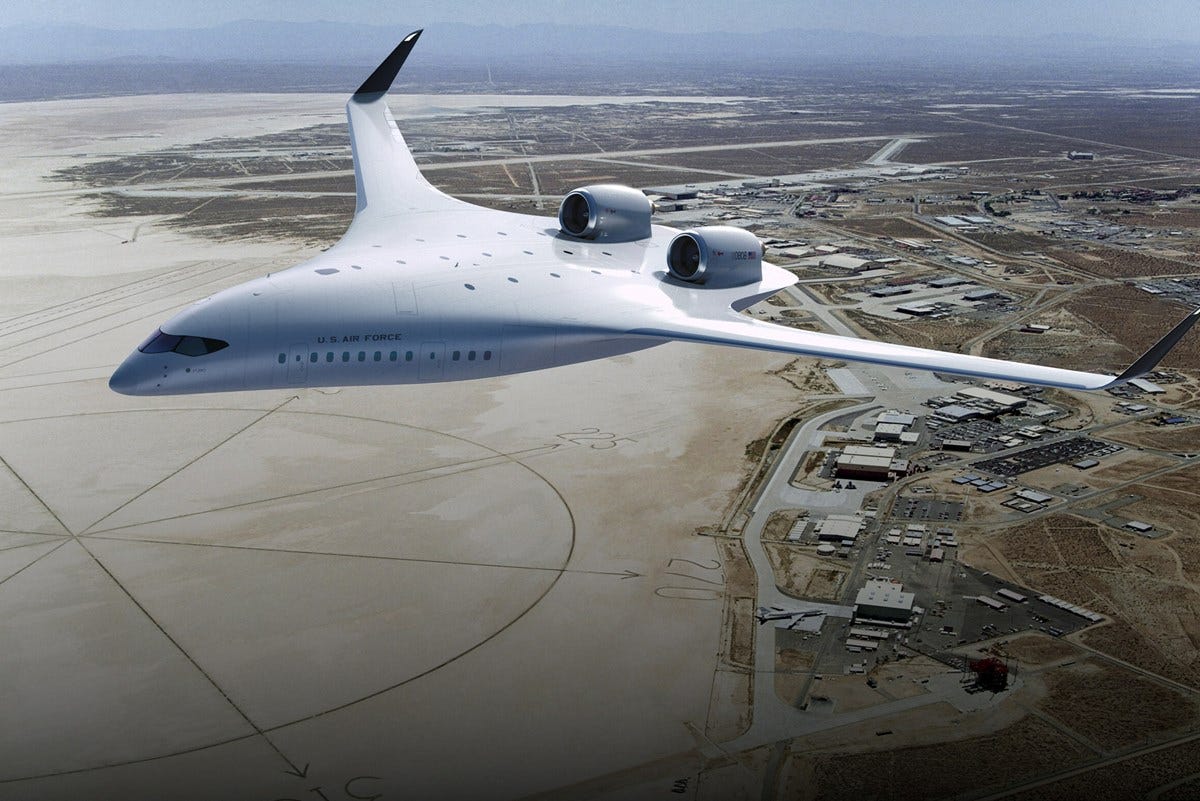
In an age where modern nations grow allergic to risk and over-cautious with public infrastructure, projects like this simply aren’t politically possible anymore. We risk moving from an age of wonder to an age of incremental change. But we will need giants again, as climate demands fewer flights with more passengers. Human nature yearns for spectacle and shared adventure. It may not look like a 747, or even an A380neo. Perhaps it’ll be a hydrogen-fed blended wing-body, or a modular airship, waiting for courage to catch up with capability. But the skies feel emptier without audacity, and that, more than any profit and loss sheet, is why this matters. It’s time someone built something mad and magnificent again.




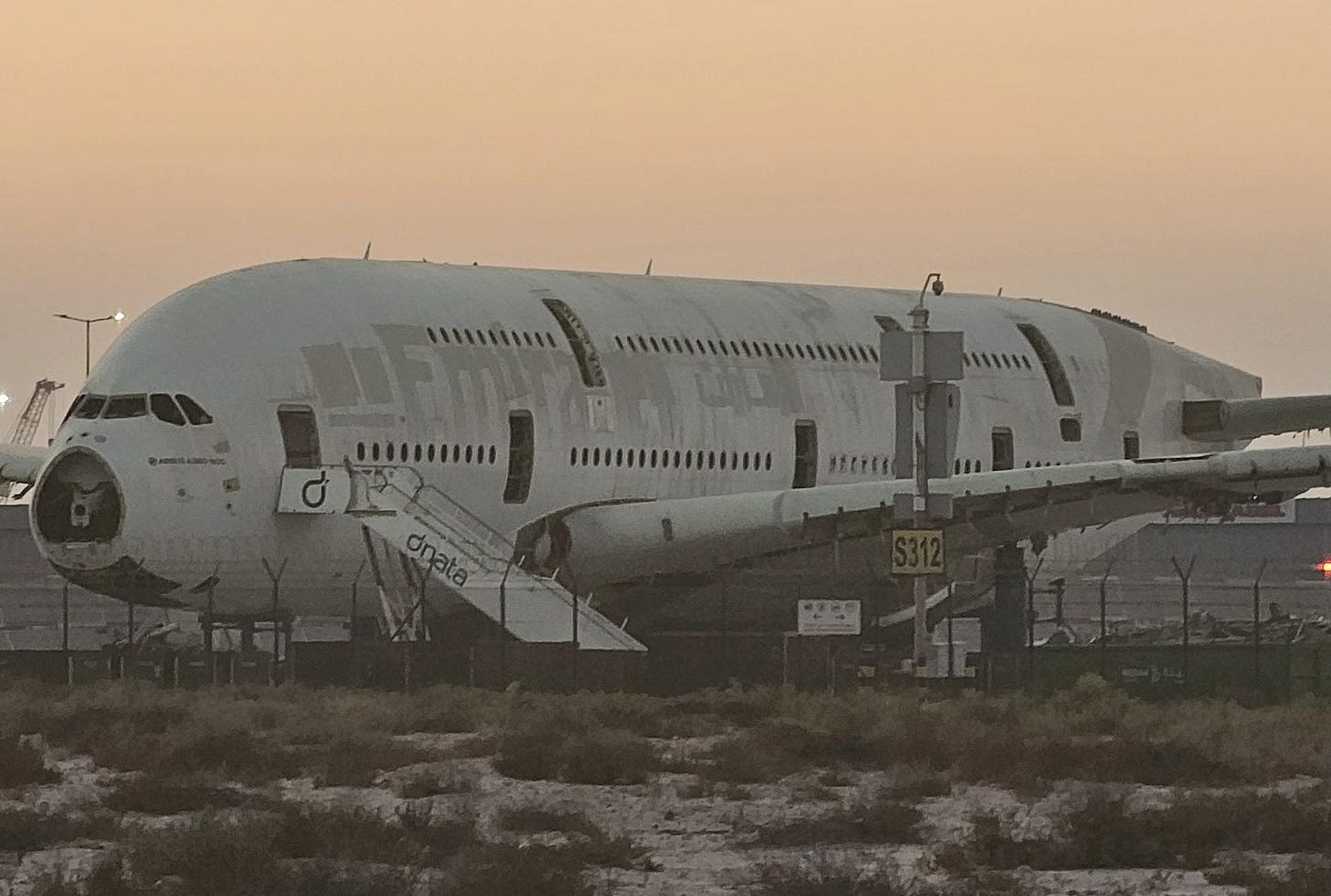
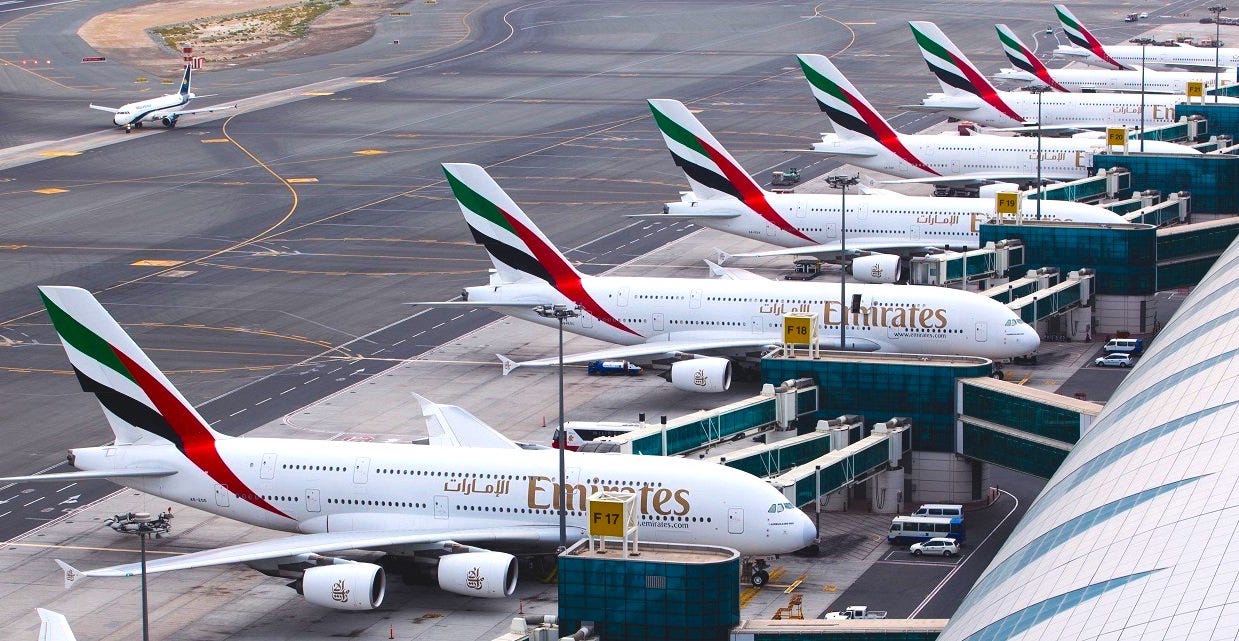
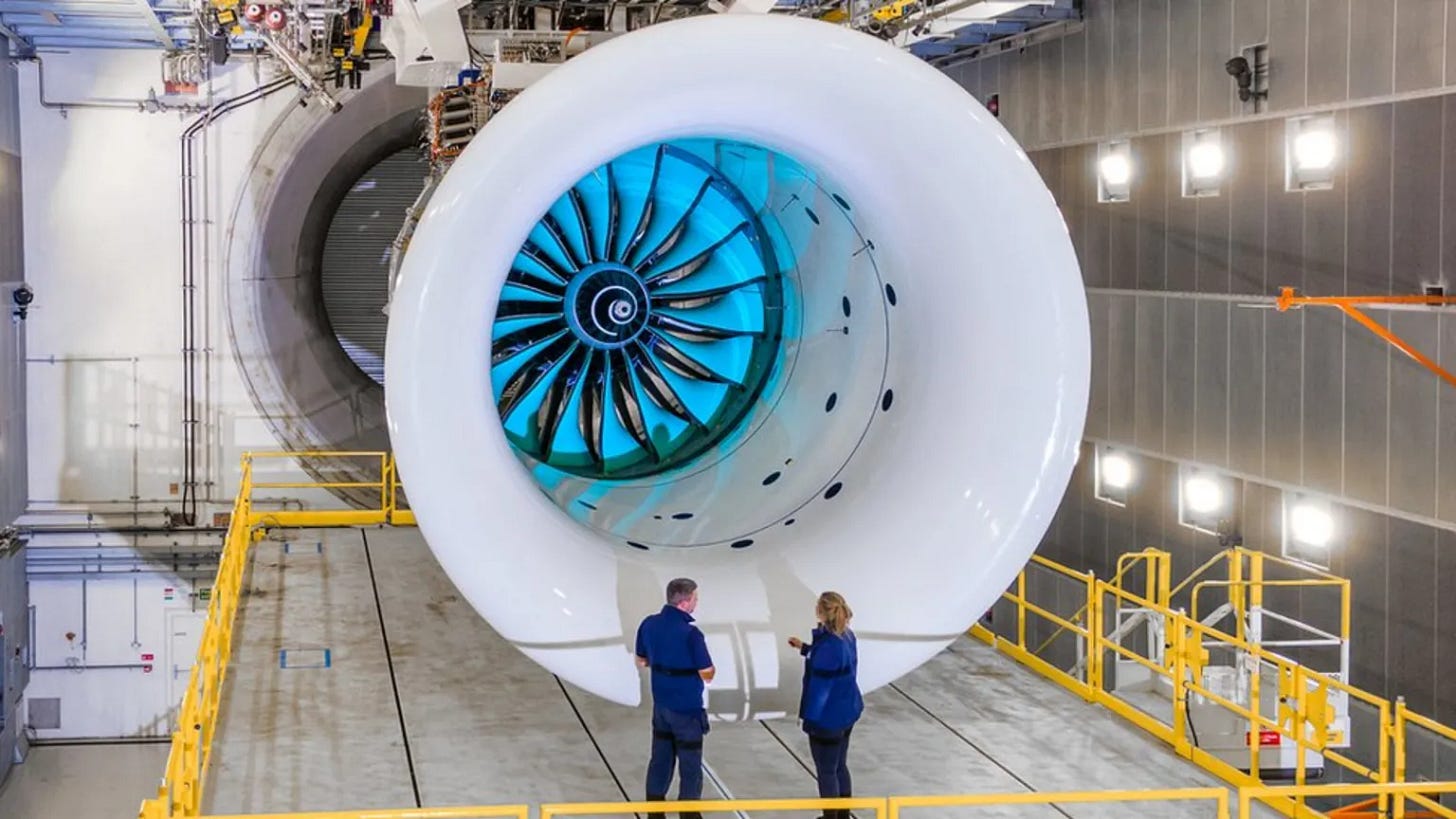
Excellent article! Perceptive and reflective.
I am a big fan of airplanes and air travel, but.....this post is so full of tropes even an enthusiast such as I has to cringe. "with accountants now at the helm, preferred economics over romance." right, all the romantic airlines went out business ages ago; TWA, PanAm, BOAC, etc. Air travel is cheaper in real terms than it ever has been and yes that means crowded airports and less "glamor (damn those plebes). "crammed in nine across", hello? Canadian Pacific 12 hours to Tokyo, 9 across on a DC10 or L1011. Does the author think the A380 with 10 across in economy is the lap of luxury or can every one can afford $5,000 for business class? Has the author even flown on an A350 or 787? They are quiet and comfortable. C'mon man.